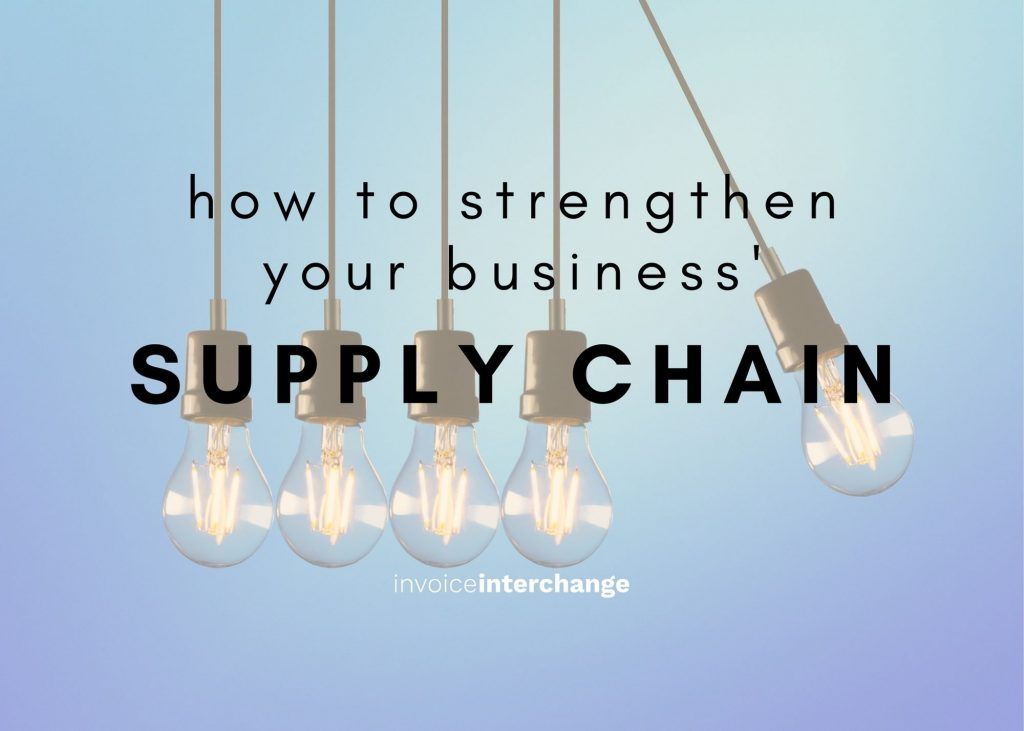
Top Tip on How to Strengthen Your Business Supply Chain
Your business supply chain may be impacted by the constant lock-down imposed by the government as a measure to control the COVID-19 outbreak. Are you facing the issue where your suppliers are unable to meet your order or have your inventory delivered in time? Worst, your suppliers are shutting down, leaving you a large whole in your supply chain. In this article, we have gathered top tips on how to best manage your supply chain in this difficult time.
What is Supply Chain
Let’s get to the basic first. Supply chain is a network between your company and your suppliers to produce and distribute your product / service to your end customers.
What Can Go Wrong in Your Supply Chain
Without additional challenge posing by the pandemic, managing your business Supply Chain itself is not an easy task. The two main areas that supply chain can go wrong are:
1. Poor supplier selection
Not vetting your supplier is one of the biggest mistakes. This could mean,
- your customer may not receive your product in a timely manner with poor quality service.
- you may not receive inventory that you order in the timeframe that you need.
- incorrect goods delivered.
- incorrect location delivered.
- poor quality goods, which effects your end product.
- rigid ordering process
- unfair terms and conditions
- costly with hidden fees and charges
This eventually causes result in end customers dissatisfaction.
2. Cheaper Supplier Location
Many businesses are now opted to source goods from a cheaper location. This is perfectly reasonable business decision as long you consider the following before making the decision.
- Do you speak the same language? Will you have any issue communicating your requirements to your supplier?
- Are you prepared for a longer lead time?
- Are you prepared to deal with the Customs?
- Have you considered any tax implication for the import goods?
- How will you deal with non-performing issues?
- Do you have the capacity to manage regulatory issue? Many large companies faced hefty fine due to insufficient monitoring of their suppliers. Issues range from child labour, low wages, dangerous workplace etc.
Minimising Supply Chain Risks
Know Your Requirement
Before heading out looking for supplier, ensure you have conducted a study internally and identify what you need clearly together with the team. Categorised them into, must have and nice to have. Understand the trade-off between building it in-house or outsourcing it.
Conduct Market Research
Have a first-hand knowledge of the supplier market/industry to help you better select your supplier. Being –
- who are the main players? Know the first, second and third tier provider.
- what is the market price?
Rigorous Supplier Selection / Onboard Process
Ensure you have a solid process for selecting a vendor. A few things to look out for
Company Background
- How long have this company been around for?
- Conduct an online research to see whether there is any negative feedback.
- Obtain director’s credit rating and previous legal actions / bankruptcy, if possible. This would show any red flag.
- Reach out to their existing customer is information is available to you.
Contract & Operations
- Review the contract thoroughly, especially the exit and penalty clause.
- Are payment terms negotiable or in your favour?
- How difficult to place an order?
- Can you get some visibility of your orders status?
- Do you find it easy to navigate through your supplier channel when you need help or information?
- What are after sales activities available?
Regulatory Matters
- Beware of any regulatory requirements that you may need to adhere to.
- Vet their knowledge in terms of the product itself, local (and your country if importing) regulation, customs.
Establish Supplier Panel
It is prudent to always have more than one supplier in your pocket to mitigate non-performing risks.
To implement this successfully, you need to consider the following:
- Number of supplier that you company can manage.
- Additional administrative costs that your business can allocate to manage your supply chain
- Lower bargaining power due to lower volume.
If your business is in no position to have more than one supplier, then ensure you always have a backup supplier in case of an emergency.
Financing To Support Supply Chain
Managing cashflow of when you get paid from your customers and when to pay your supplier always challenging. Invoice Factoring is one of a popular financing tool that can help you get paid on your outstanding invoices as and when you need to. You can then use this fund to pay your supplier on time, or even early to get some discount.
Related Articles

How Invoice Finance Facilities Can Grow With Your Business

The Working Capital Challenge: How Long Credit Terms Could Be Holding Your Business Back
